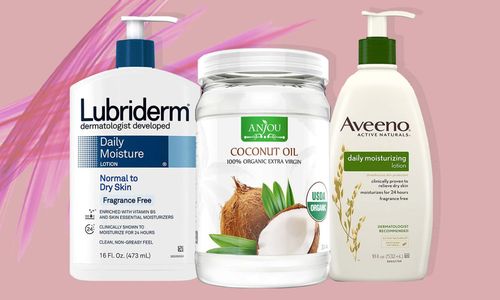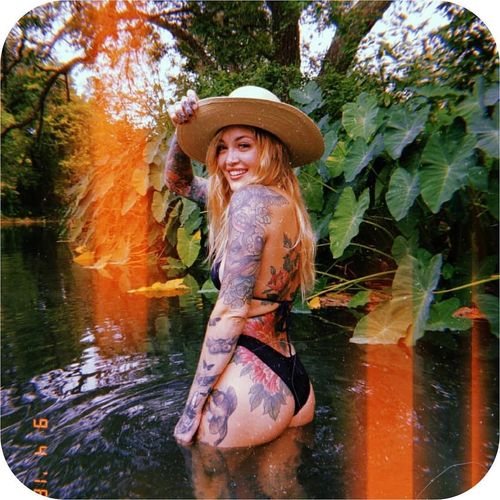Contents
How Long Does It Take for a Tattoo to Heal?

It takes 2-3 weeks for a tattoo to heal completely. During that time, your skin does a lot of things to heal your tattoo — here’s what to expect and what not to expect.
- Keep it clean with antibacterial soap, do not rub or itch it, cover with a light layer of A&D.
- Continue cleaning, but do not soak in a pool or tub! Continue using A&D
- Do not pick, itch, or peel the scabs and flakes that are forming. Use a light layer of fragrance free lotion.
- Voila! New dermis! Continue using lotion to see your beautiful new tattoo perfectly heal in this time.
A tattoo usually takes about 1-2 weeks to look fully healed, but takes another few weeks to be truly healed at all layers of the skin. The healing timeline can depend on the type of ink you get, the style, and the size. Different parts of your body have slightly different sensitivities and types of skin, which will affect how well they absorb the ink and how quickly they heal. Completely healing all the layers of broken skin can actually take up to 4 months, even though your tattoo will appear healed before that point. The healing process varies depending on a person’s immune system, ability to fight infections, and aftercare treatment, especially cleaning and sun protection.
You’ve just gotten freshly tattooed, and it looks amazing. You’ve got your artist’s directions on aftercare, and you’re ready to follow them to a T. Over the next few weeks, your skin is going to go through a healing process — here’s what you can expect throughout that process, and how to take care of every stage. Just remember, everyone is a little bit different physiologically, so your healing process won’t look exactly like this, but it’ll be pretty close. It will usually take 2-3 weeks for your tattoo to heal completely. Doing your research before by choosing a reputable tattoo parlor will minimize your risk of any complications and infections. Keep in mind that we’re not doctors and your artist isn’t a doctor, so call your doctor immediately if you suspect infection.

Day 1: Taut, bright and fresh
Your tattoo looks just like the flash on the walls when you walked into the shop! This is the best time to see how it’s essentially going to look healed, albeit a little brighter than its final form. Your tattoo is still an open wound at this stage, so keep it safe and clean this first day and night. In the first few days, it is extremely important to rinse your tattoo with antibacterial, fragrance-free soap and hot water 2-3 times daily. When you shower during this stage, be sure not to rub your tattoo with a towel or you will aggravate your skin and disrupt the healing process.

Days 2-6: Oozy
Once you’ve got your tattoo wrapped and walked away from the shop, your skin is probably pushing plasma out of that open wound. This is your skin’s normal response to your new ink. Plasma is essentially the liquid protein that makes up 50% of your blood; it aids in the healing process by helping to form clots, scabs, and move other substances through your bloodstream. When you remove the wrapping from your tattoo, there’s going to be oozy ink everywhere — this is the ink combined with blood cells and plasma, pushed out through your tattoo to heal the broken skin.

Your tattoo might also be giving off some heat — hold your hand above it and that particular area of your skin is probably fiery. This is also a part of the healing process. Your white blood cells and plasma are reacting to the open wound — this is natural inflammation, a way for your body to destroy any toxic agents (as in, potential for infection) and restore tissue. Your body is doing the hard work to basically close up that first layer of skin, the epidermis, so the tattoo can live in your second layer of skin, the dermis. Some people who have immune-disorders, struggle with dehydration, or are prone to bruises may experience additional bruising at this stage. Keep an eye on it, but this isn’t uncommon. Once again, keep your tattoo clean and follow your artist’s aftercare instructions. By the end of this stage, your tattoo will probably start scabbing.
Days 7-14: Scabby and flaking

Your tattoo, especially if it’s more than just line work, is going to be scabby by this point. Your epidermis is healing itself and is no longer an open wound — your white blood cells, the protectors of your immune system, have worked together with the plasma proteins in your body to create a scabby cap where your open wound was. The ink is still there, underneath, but the first layer of it that was hovering in the epidermis will flake away. Don’t pick, don’t peel, don’t press, don’t mess with it. The way you treat this stage can really affect the art — trust us, we’ve slammed our fresh scabby tattoos into enough table corners to know. You can use a bit of moisturizer to keep your skin hydrated, but don’t overdo it!

Healing taking a long time? Signs to spot infection: These are NOT normal and NOT part of the healing process!
- Red lesions
- Fever
- Puss
- Hard, raised tissue
- Swelling
- Redness
- Rashes
If you experience any of these symptoms for more than a couple days, you should call your doctor — not your tattoo artist — right away.
Days 15-30: Fresh and clean but dulled art
All the scabbing and flaking is gone, and your tattoo has a slightly taut look to it — it’s still new but the healing is almost done. It might seem a little set back into your skin or dull-looking, but that’s because you have a nice, new layer of epidermis over it that hasn’t completely settled yet. This new layer of skin will eventually look like the rest of your skin, due to your skin’s natural exfoliation of dead skin cells. So, don’t worry, your art will shine through by the end of this phase. This is a great stage to regularly moisturize and keep track of your regular skin care regimen, so your tattoo can look its best.
Remember, following your artist’s aftercare directions is key to making sure your healing process goes smoothly. Keep your tattoo clean, moisturized when necessary, dry when needed, and treat it with care. Always use antibacterial soap and a clean, dry cloth or towel to pat the area dry. Never rub it dry since rubbing can damage your skin! If anything seems unusual, contact your primary care physician, not your tattoo artist, as they aren’t certified to diagnose a problem. When you’re in the healing process, you might find yourself wondering why you went through all this pain just to have to go through an oozy, scabby mess, but trust us — it’s worth it. Cared for properly, the art on your body will last your whole lifetime.

Tattoodo is your number one destination for everything tattoos — finding a shop, preparing for your first tattoo, learning more about the tattoo community. Our guides are meant as a toolkit to help you be the best client and learn how to work with your tattoo artist to create the tattoo of your dreams. Remember: No matter what you read on the internet, your artist’s advice should be considered the gold standard.
